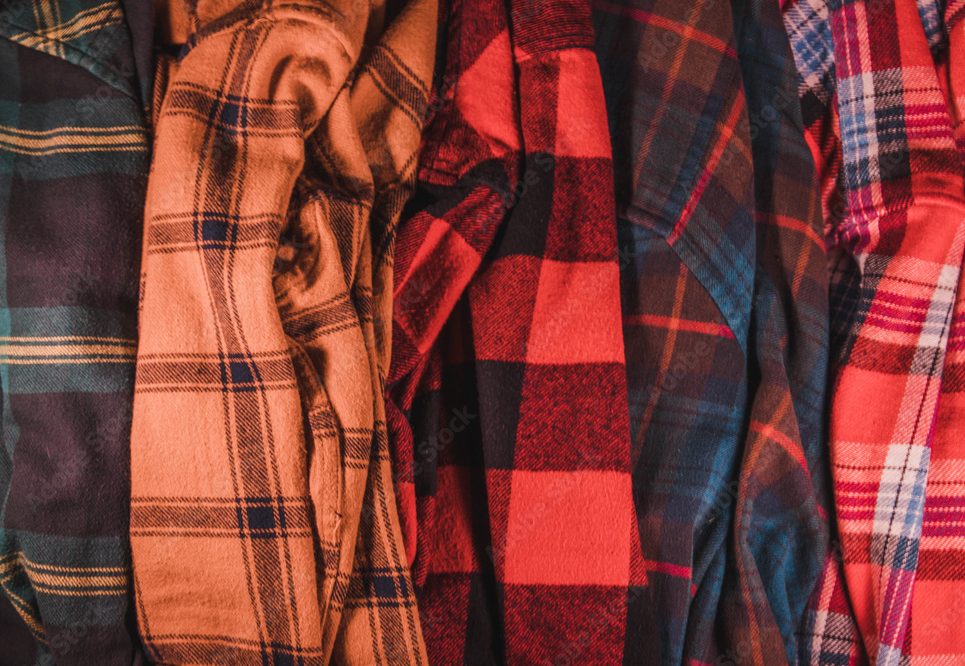Blood, Sweat & Flannel
November 2, 2024 – June 29, 2025
What comes to mind when you hear the word “flannel?” Perhaps it’s your favorite plaid shirt, your trusty yardwork outfit, a rugged lumberjack or even a classic grunge band.
A new, original High Desert Museum exhibition, Blood, Sweat & Flannel, explores what flannel represents. Opening November 2, 2024, and running through June 29, 2025, this unique experience invites visitors to explore the stories behind flannel—a fabric that goes beyond clothing to reflect the history of work and culture in the High Desert region.
While flannel originated centuries ago in Europe, the warm fabric with an ability to wick moisture became staple in the United States. Today, flannel is produced from various materials, including wool, cotton and even synthetic fibers. Its signature softness comes from a brushing process called “napping,” which raises fine fibers on one or both sides of the fabric after weaving, enhancing its cozy feel.
“Flannel is more than just a fabric; it’s a symbol of resilience and identity,” said Museum Bonnie Lee and Oliver P. Steele III Curator of Education and Engagement Molly Wilmoth. “For generations, flannel shirts, jackets and undergarments have been essential for workers in the High Desert, providing warmth and comfort as they logged trees and roped cattle. Later, alternative rock artists like Nirvana adopted flannel as their nod to non-fashion.”
To tell the stories of these histories, the exhibition will be split into these five major sections: timber, ranching, herding, sportswear and alternative rock. The exhibition will feature imagery, tactile elements and interactive displays that bring to life the experiences of those who wore flannel during each era.
Blood, Sweat & Flannel also delves into the cultural significance of clothing as a representation of identity. Visitors will explore how flannel has shifted through various eras, culminating in its association with the grunge movement, featuring music from iconic bands like Nirvana and Built to Spill. This evolution reflects not only a change in fashion but also a broader cultural dialogue around individuality and expression.






